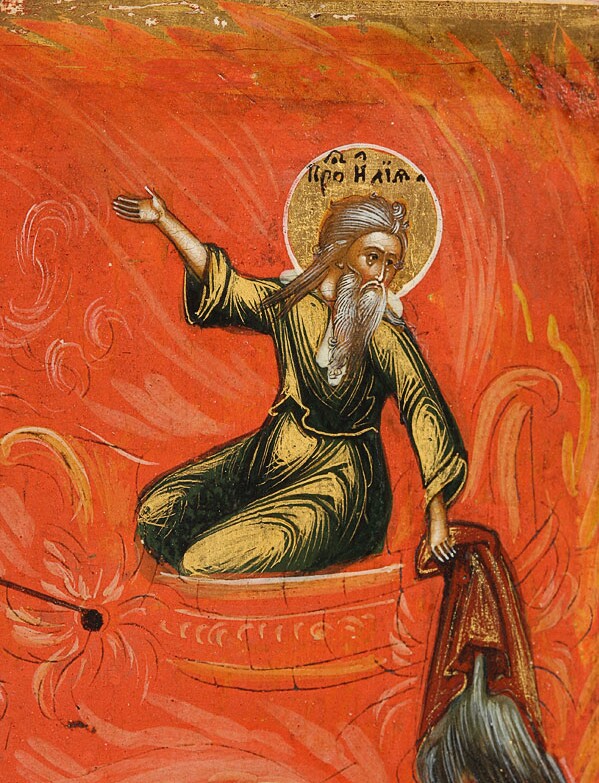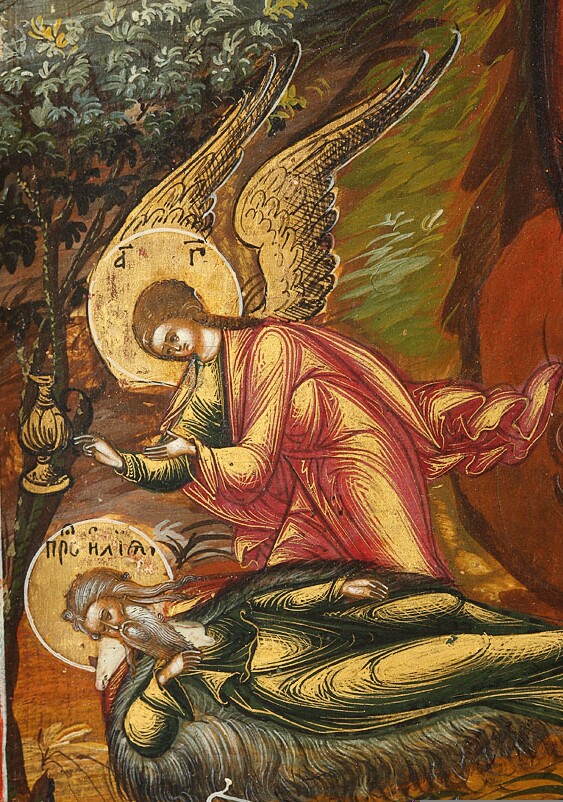I have mentioned previously how icon painting in Russia changed drastically from the latter part of the 1600s onwards. And I have mentioned that the old stylized manner of icon painting survived largely due to the ultra-conservatism of the Old Believers, who not only refused the innovations in ritual and text forced on them by the Patriarch Nikon, but also kept to the old style of icon painting, scorning the western innovations favored later by Tsar Peter “The Great.”
I have mentioned too how the “official” Russian Orthodox Church, working hand in hand with the Tsar in the 1600s, had the chief voice of the Old Believers — the Archpriest Avvakum — murdered; they burnt him at the stake. And when the State Church went after the other Old Believers, they escaped and spread into distant regions farther from the Church and State authorities, moving into northern Russia, into the Urals and Siberia, and down among the Cossacks and into other regions where they might be safer.
Nonetheless, some of the Old Believers, when threatened by the forces of the Tsar, locked themselves inside their wooden churches and set them on fire, preferring to die in flames rather than to accept what they considered to be the great heresy that had come into the Russian Orthodox Church through the innovations of its Patriarch, Nikon.
And that is today’s topic — the odd connection one finds between the Old Believers and fire.
Fire, in Russian, is огонь — ogon‘. Russian being an Indo-European language, it is not difficult to see that the Russian word is in essence the same as the Sanskrit Agni, which, in addition to meaning “fire,” is also the name of the Vedic God of Fire, to whom sacrifices are made. So there is an interesting psychological link here with the Old Believer way of thinking.
The Old Believers saw fire as both a purifier and a connection to the end of the world and the Last Judgement. It is not surprising that we see this reflected in their icons.
They were also the chief makers of cast metal icons, and saw them as images created by fire rather than painted by the hand of man.
They were also fond of icons of the Prophet Elijah (Iliya), who through his prayers was able to call down fire from heaven upon his sacrifice. So we find many Old Believer icons of Elijah that include the “Fiery Ascension of the Prophet Elijah,” as in this example, painted by a very skilled artist:

Let’s take a look at the identifying inscription, apparently written by a hand other than that of the painter of the image, which was a common practice:

It reads, ОБРАз ОГНЕННОЕ ВОСХОЖДЕНИЕ С[вя]ТАГО ПРО[рок]а ИЛИЙ — OBRAZ OGNENNOE VOSKHOZHDENIE SVYATAGO PROROKA ILIY — “IMAGE OF THE FIERY ASCENSION OF THE HOLY PROPHET ELIJAH.”
We see, as the central image, Elijah seated in his cave in the wilderness. Around him are scenes with his follower Elisha, showing Elijah parting the waters of the Jordan River with his mantle (on one side), and (on the other side) is Elisha doing the same with the mantle dropped to him from Elijah’s fiery chariot, the scene at the top. At lower left is an angel about to awaken Elijah to eat the food brought to him.
Here is a detail of the fiery horses; note how the painter has delineated them in just black and white, with the flames doing the rest:

And here is a closer view of Elijah ascending in the fiery chariot. Look at the gold highlighting on his garments:

Look closely at his garments again in this detail showing the angel awakening Elijah:

There is something interesting about the technique here. As already mentioned, the highlights on the garments are gold. That was made possible by gilding the entire background of the icon, then painting the figures over it. The highlights were then added by removing paint from the area to be highlighted, revealing the gold base beneath. This is in contrast to highlighting practiced in many icons simply by lightening the base color with white, or by adding gilding over the garments. This method of “removing to reveal” the gold beneath was very effective, and makes for very striking icons.
Look also at the trees and leaves in the background. Though the Old Believers were careful to keep to stylization in the figures of the saints, it is not uncommon to see touches of westernization in the painting of the background landscape, and in the trees and leaves seen here, which are not as radically stylized as in earlier times.
Finally, we can see the skill of the face painter in this detail, showing careful whitened highlighting over the sankir (dark brown) base, and the painting of beard and hair by the persistent adding of very fine, white lines.

The inscription in the halo reads “Holy Prophet Elijah.”